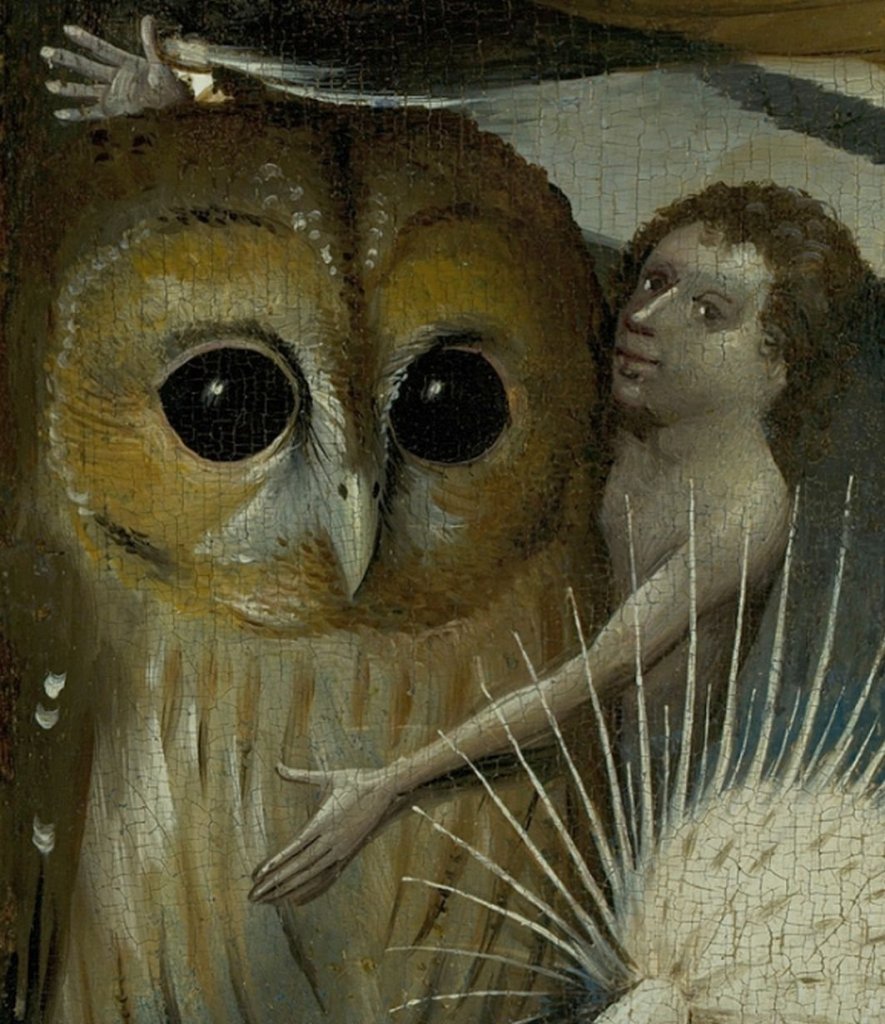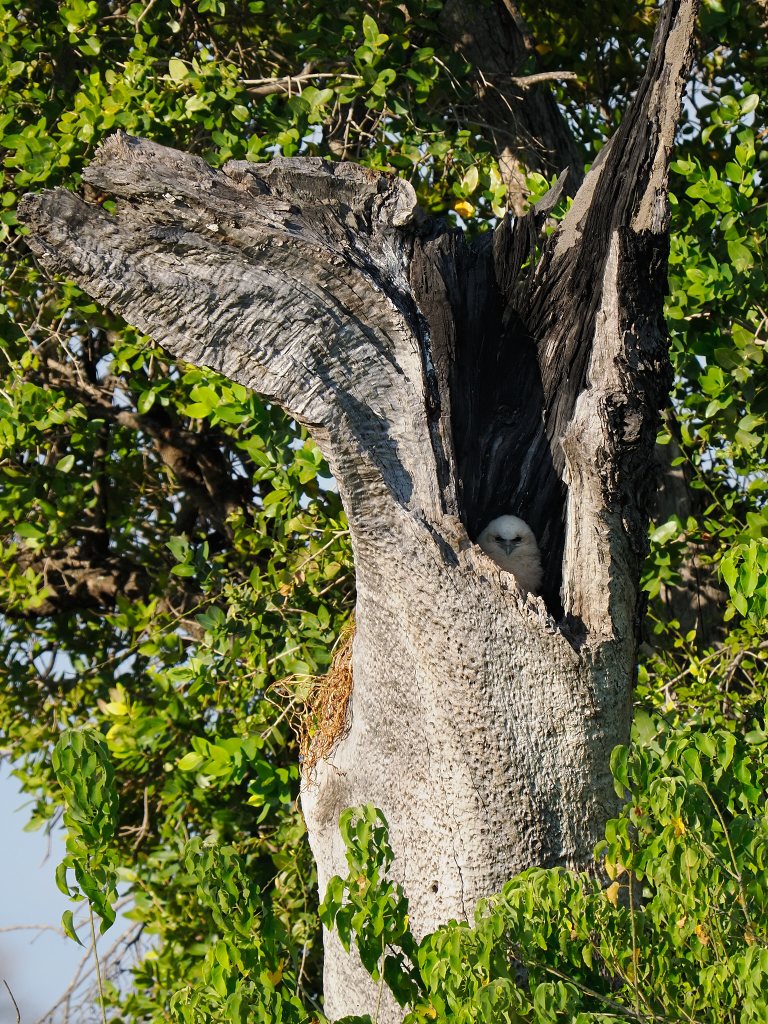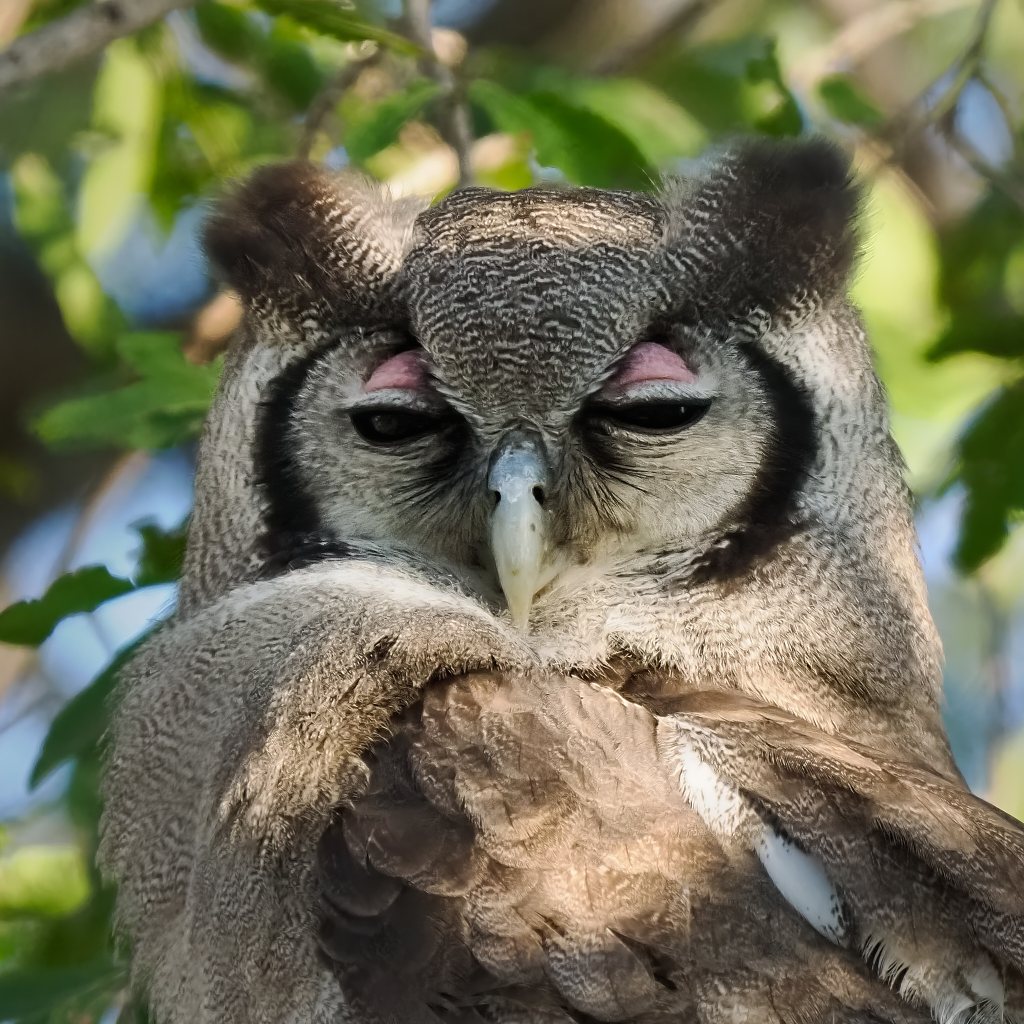One of our local driver/guides found us a large owl, Verreaux’s Eagle-Owl. He recalled that as a child the call of the owl would strike fear in his heart and send him running home. To his family the owl was a bad omen. For other African people it was the wise owl or even the nocturnal protector of the village.
In the fairy tales I grew up with the owl was wise but in European folklore it has also figured as the harbinger of death, an associate of witches or the protector of barns from lightning although to fulfill that duty it first had to be nailed to the barn door.
The Dutch painter Hieronymus Bosch ((c. 1450 – 1516) depicted owls in many of his works. He was either a deeply religious man seeking to demonstrate the dreadfulness of sin (the orthodox view) or someone who’d found a neat loophole in the censorship laws. He may have seen owls as wise in that knowing too much, cynical sort of way, having eaten from the tree of knowledge etc or he just had a fetish. A detail from The Garden of Earthly Delights …

Verreaux of the Eagle-Owl and also the Eagle, Coua and Sifaca (and also celebrated in the scientific names of a dove, a parrotbill, a skink, a gecko and an eel) is Jules Pierre Verreaux (1807 – 1873) a French botanist, ornithologist and professional collector and trader in natural history specimens. He earns a mention in the Biographical Notes of the Australian National Herbarium for his plant collecting activities in New South Wales and Tasmania. They don’t go into much detail about his exploits in Africa.
Whilst in Botswana in 1830 Verreaux observed the burial of a Tswana Warrior. He returned that night , dug up the corpse, took the skin, skull and a few other bones, crated it all up with a few other specimens and sent them off to Paris. I wonder if the owl was part of the same shipment.



